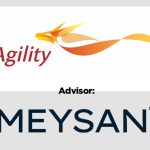In any court case, it’s important to understand how the dynamic of the barrister, expert witness and solicitor works, as this can be helpful in determining their involvement from the outset and therefore aid in the building of the case. Below Lawyer Monthly benefits from top industry expertise from Dominic Wreford, Managing Director and European leader of the Disputes & Investigations practice at Duff & Phelps.
The origins of the ‘barrister, expert witness & solicitor’ triangle ultimately start with the selection process for expert witnesses, and this can set the tone across the whole life of a matter. Often the selection process seems to have its own mystique. It’s usually the sole domain of the solicitors, and occasionally their clients. In fact, it’s uncommon for a barrister to be involved at all in the identification of experts to shortlist for interview.
Behind the scenes, references of performance might be sought – typically from solicitors rather than barristers. Sometimes the instructions to the expert on the topics they are to cover may have been agreed between the parties beforehand, and only then will an expert be retained.
Alternatively, there can sometimes be an iterative process whereby an expert works with the solicitors from the outset to address the issues underpinning the claim, and provide guidance on which topics require expert evidence. This approach can be driven by the availability of information or disclosure, and its outcome may in fact affect the basis of a claim entirely. Examples could include general and specific damages in defamation cases.
My area of expertise is quantum, the assessment and calculations of guiding a claimant on whether their case is worth pursing and how much they would receive in a court action. So, when providing opinion here, it’s essential to differentiate between the calculable and the incalculable. In fact, almost counter-intuitively, what is calculable and incalculable may evolve as the case progresses – and again could ultimately impact the basis for the claim.
Throughout the process, the ability of each member of the triangle to understand the framework within which they are functioning is very helpful. Barristers may be more involved at an earlier stage if the legal basis of the claim is in flux, with their role being to assist with the decision-making process – meaning the distribution of work amongst the triangle is fairly equal at this stage.
The triangle is a dynamic relationship, and additional instructions to the expert from the solicitors may be needed, reflecting decisions that they and the barristers have taken.
Liability might well be present, however if there is no or minimal impact on quantum itself then the work of the expert witness may lead to heads of claim being dropped. For this reason, engaging with experts at an earlier stage may therefore save the cost of pursuing avenues of liability that ultimately would not result in significant levels of quantum. That being said, much often depends on disclosure.
As the matter proceeds closer to trial, the dual involvement of the barrister with the expert grows. Often this stage will involve the barrister quizzing the expert in order to fully understand their opinions and those of the expert for the opposing party. They will also be looking to explore apparent weaknesses in cross-examination.
Lastly, when it comes to the hearing, the expert will often be asked to sit behind the barrister and be available to inform any potential questions/follow-ups that may be needed or to confirm whether answers given are correct/agreed.
The inter-relationship of the triangle is not therefore set in stone from the outset, in fact there is a noticeable evolution of their roles and interaction over the life of a matter.








